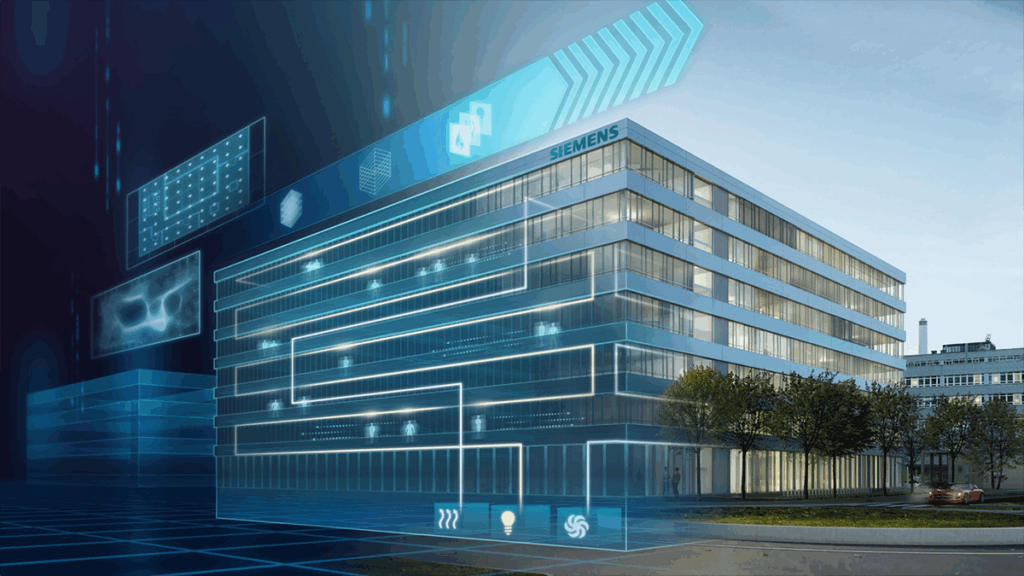Susanne Seitz, CEO of Siemens Building Smart Infrastructure, discusses the future of smart buildings, where AI has an important role to play
Buildings still have a long way to go when it comes to energy efficiency. Most of the attention is on the heating, ventilation and air conditioning systems. That’s because they usually make up over half of a building’s total energy use. And in many cases, they are still running on basic schedules that don’t reflect how the building is actually used.
A system that switches on at the same time every morning and off again in the evening doesn’t account for whether a space is occupied, how many people are in it, or whether external conditions have changed. Even newer systems that respond to temperature changes can fall short if they aren’t working with accurate, real-time data.
That’s where AI is being introduced. It allows buildings to adjust their systems more precisely, using live information about occupancy, weather, and usage patterns. Instead of simply reacting, the system can anticipate what’s needed and make adjustments automatically. These aren’t futuristic ideas. These are tools being applied in real buildings now.
Making better decisions with real data
AI can be used to predict and fine-tune building performance by drawing on a mix of real-time and historical data. For example, Siemens’ Comfort AI application continuously collects inputs from across the building, such as heating and cooling setpoints, room temperature, valve positions, and central system data, and combines them with weather forecasts and occupancy data, where available. Every 15 minutes, that information is processed using machine learning to determine the most efficient HVAC setpoints for each zone, while maintaining comfort thresholds.
Rather than retraining itself or learning over time, the model works by applying complex algorithms to a rich, up-to-date data set. The result is a system that can anticipate demand and adjust conditions more precisely, cutting unnecessary energy use without needing constant human input.
One example already in use
Siemens has applied this approach in its Comfort AI application, which sits within the Building X platform. It uses predictive modelling and machine learning to optimise HVAC performance. According to Siemens, the addition of AI provides around 6.5% extra energy savings, on top of the 30% that can already be achieved through digital control and automation.
Crucially, systems like this don’t just benefit individual buildings. They make it easier to scale improvements across multiple locations. Lessons from one site can be applied across others without having to start from scratch each time. That’s particularly useful for organisations managing large or complex estates, where consistency and visibility are hard to maintain.
When you have systems that are learning and adjusting across the portfolio, performance becomes easier to track and improve. Teams can spot patterns more quickly and apply changes more confidently. The system is also less likely to drift from its intended settings, which is a common problem in traditional HVAC systems over time.
Where this is heading
There is growing pressure on building operators to reduce energy use. Some of that is driven by cost, some by policy, and some by corporate sustainability goals. AI is not a silver bullet, but it is a useful tool. It helps create buildings that are easier to run, more consistent in performance, and more aligned with how people actually use them.
What makes this work is not just the AI itself, but the way it’s applied. Good systems are the ones that don’t demand constant attention. They improve performance in the background and give teams better information when they do need to intervene.
As more organisations look to cut carbon and make buildings more efficient, these kinds of technologies will become standard. The shift has already started. The focus now is making sure the tools in use are delivering measurable results, not just promises.
Susanne Seitz is the Chief Executive Officer of the Siemens Buildings Business Unit, part of Siemens Smart Infrastructure which is headquartered in Zug, Switzerland. Seitz and her team focus on accelerating digital transformation towards smarter, more sustainable buildings.
There’s plenty of other editorial on our sister site, Electronic Specifier! Or you can always join in the conversation by visiting our LinkedIn page.
